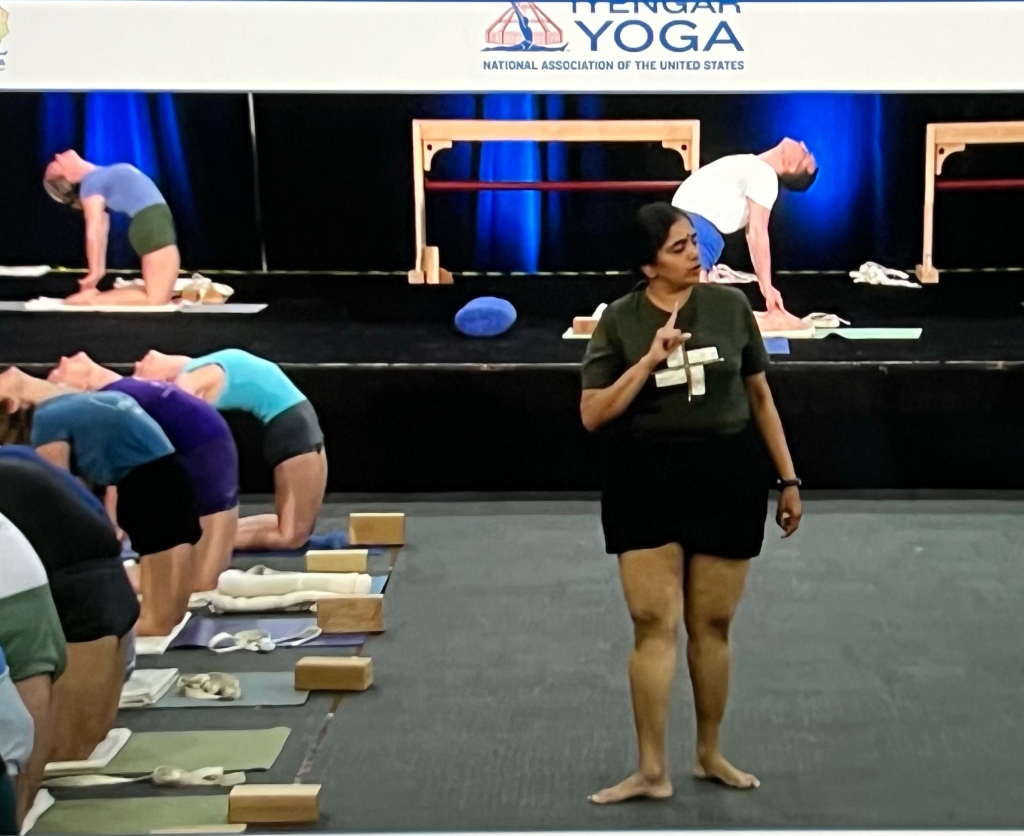The IYNAUS convention’s 5th and last day came quickly offering a send off with pranayama followed by a experimental backbend practice guided by Abhijata. Typically, this is not the desired format of practice. Usually you would have pranayama follow an Asana practice, but she chose to do pranayama first to make the mind fresh for back extensions. Mega classes at conventions are not normal practices but rather a platform to share as much as possible in the given format.

Each day of the convention started with Abhijata showing reverence (a Puja) to her Gurus, BKS and Geeta Iyengar, most significantly Patanjali. A idol and altar of images are usually established such as in the practice hall at RIMYI in Pune, as in the image of Prashant in earlier post, and in a personal practice space of a devoted yoga practitioner. A puja includes an offering of flowers, refreshments, incenses and loving adoration to those who have lit the path. Performing a puja is a way to cultivate and nurture daily gratitude and develop everlasting grace, Isvara Pranidhana (unconditional surrender to a higher power), connecting our practice on a spiritual level.

Throughout this guided class, Abhijata reminded practitioners to be with their Sankalpa as a duty of training the brain to read their body. “Brain tries to dictate! The body will talk to us, but we don’t listen!”
The brain has to learn to see without desire and receive without reaching. Our intelligence has to be a good servant to read the body, see reality as it is, to make sure everything is working as needed, not as desired. If intelligence is the master, as it tends to want to be, the ego can punish the body and injuries lie await.


Our asana practice is a way to train our intelligence to really see what is happening and know the relationship to the body and breath. There was so much experiential wisdom shared by Abhijata… oh, so grateful.
Abhijata’s last day remarks focused on Sankalpa as a group and the importance of coming together as yoga practitioners, supporting each other as we walk this path. “Our hearts are bound with the thread of love for yoga and humanity.”
“Take what you have learned and continue on. The seed has been planted. The tree will grow.”

“So constructively use this coming together state of mind to shape whatever is in our hands to face the present moment, with gratitude and acceptance. And once that is done, the future is going to be beautiful.”
Thank you Abhijata, we ❤️ you!






























